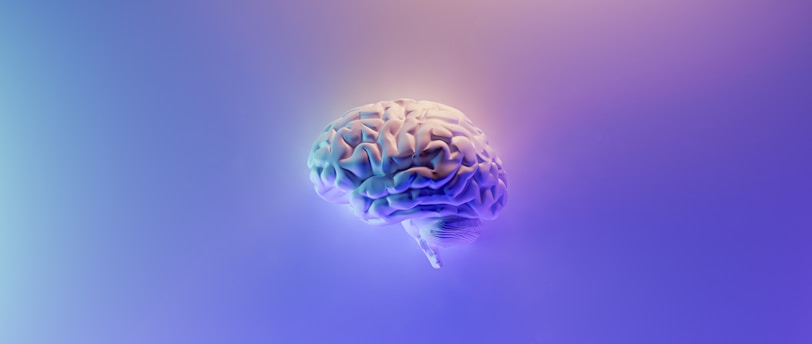What is Retrieval-Augmented Generation [RAG] in Generative AI?
Retrieval-Augmented Generation (RAG) enhances language models by connecting them to external knowledge sources, enabling more accurate and verifiable AI responses.
Team Humanlee
4/19/20254 min read


What is Retrieval-Augmented Generation (RAG)?
Retrieval-Augmented Generation (RAG) acts as an AI memory upgrade, connecting large language models to external knowledge sources they couldn't otherwise access.
When you ask a question, RAG first searches through documents, databases, or websites to find relevant information, then passes both your question and this retrieved context to the language model for answering.
Unlike traditional LLMs limited to information from their training data (often with knowledge cutoff dates), RAG systems can reference up-to-date facts, specific documents, and specialized knowledge, dramatically reducing fabricated responses called "hallucinations" while improving accuracy and transparency.
What happens when RAG retrieves information?
Knowledge retrieval forms the backbone of how RAG operates in practice. A user's query gets converted into a mathematical representation called a vector embedding, which allows the system to find the most semantically similar information in its knowledge base. Similar to how you might scan a library index for relevant materials, RAG scans through its vector database to identify the most pertinent information. Once found, this retrieved content doesn't replace the original question but instead enriches it with additional context.
The retrieval process unfolds in four essential steps:
Create external data repositories by converting documents, files, and data into numerical representations through embedding models, establishing a searchable knowledge library the AI can understand
Retrieve relevant information by matching the query's vector representation with similar vectors in the knowledge base, finding semantically related content rather than just keyword matches
Augment the LLM prompt by combining the original question with the retrieved context, giving the model specific facts to reference when crafting its response
Update the external data periodically to keep information current, allowing RAG to access information beyond what was available during the LLM's original training
Why is RAG better than standard LLMs?
Factual accuracy skyrockets when RAG systems ground their responses in verified information. Regular language models sometimes generate plausible but incorrect information because they rely solely on patterns learned during training. Human evaluations conducted in early 2025 showed RAG dramatically outperforming standard LLMs when answering questions about specialized knowledge or recent events, with one study demonstrating a 42.7% improvement in factuality assessments.
RAG offers several advantages that make it particularly valuable for business applications:
Access to current information allows responses based on data beyond the model's training cutoff
Domain-specific knowledge can be incorporated through specialized document collections
Proprietary company information becomes accessible without retraining the entire model
Source citations provide transparency about where information originated
Knowledge bases can be swapped or updated without retraining the underlying model
How does RAG reduce AI hallucinations?
Grounded generation represents the fundamental mechanism through which RAG minimizes hallucinations. Standard LLMs operate like students taking exams without access to textbooks – making educated guesses based on previously memorized information. RAG changes this dynamic completely by allowing the model to "open the book" and check specific facts before answering.
Organizations implementing RAG in 2025 have reported significant improvements in reliability:
Financial advisors use RAG to incorporate live market data when generating investment recommendations
Healthcare applications access medical journals and clinical guidelines before suggesting treatments
Legal assistants reference specific statutes and case law rather than relying on general legal knowledge
Technical support systems pull from the latest product documentation when troubleshooting issues
What makes RAG's architecture special?
Hybrid memory systems create the foundation for RAG's unique capabilities. Traditional LLMs store knowledge implicitly within their neural network parameters – billions of numbers that encode patterns learned during training. RAG supplements this parametric memory with a non-parametric component – essentially a searchable external database that can be freely updated and expanded.
Several architectural variations have emerged since RAG's initial development:
RAG-Sequence models use the same retrieved documents throughout an entire response generation
RAG-Token models can draw different information for each part of a response, creating more nuanced answers
Multimodal RAG systems introduced in 2025 can process and retrieve information from text, images, audio, and other data types
Which advancements are shaping RAG in 2025?
Multimodal capabilities have revolutionized RAG systems in 2025, expanding their reach far beyond text-only applications. Modern implementations like Mistral AI's Pixtral Large now analyze documents, images, and charts while maintaining powerful understanding across dozens of human languages and over 80 programming languages. According to recent benchmarks, these multimodal systems outperform their text-only predecessors by substantial margins on complex reasoning tasks.
Major 2025 advancements include:
Real-time data processing enables instantaneous updates through dynamic indexing, critical for applications requiring current information like financial systems
Cross-lingual retrieval bridges language barriers by matching queries with relevant documents regardless of original language
Adaptive algorithms continuously improve retrieval quality by learning from user interactions and feedback
Edge computing integration moves processing closer to data sources, reducing latency for time-sensitive applications
How can you implement RAG for your projects?
Cloud platforms offer the most accessible entry point for developers wanting to implement RAG. Major providers have introduced comprehensive services that handle the complexity of setting up and maintaining the infrastructure. Amazon Bedrock provides serverless access to cutting-edge models, while Google's Vertex AI RAG Engine offers a complete framework for context-augmented applications.
Getting started typically involves:
Preparing your knowledge base by collecting relevant documents and data
Processing content into embeddings that can be efficiently searched
Selecting appropriate retrieval methods and vector databases
Integrating with your chosen language model through API connections
Testing and refining your system for accuracy and relevance
Key Takeaways
Retrieval-Augmented Generation (RAG) enhances language models by connecting them to external knowledge sources, enabling more accurate and verifiable AI responses. RAG systems retrieve relevant information before generating answers, grounding responses in specific facts rather than relying solely on training data, which significantly reduces hallucinations and improves factual accuracy.